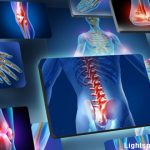Treatment emergent adverse events included infections and cardiac disorders (not defined), which were similar between the two treatment groups. The incidence of osteoporotic fractures was numerically lower in the patients treated with denosumab (n=9; 6.3%) compared with patients treated with risedronate (n=15; 9.6%).
Overall, treatment with denosumab compared with risedronate led to significantly greater BMD increases in patients with RA and glucocorticoid-induced osteoporosis receiving concurrent glucocorticoid treatment. Both agents had similar safety profiles.
ad goes here:advert-1
ADVERTISEMENT
SCROLL TO CONTINUE
Michele B. Kaufman, PharmD, BCGP, is a freelance medical writer based in New York City and a pharmacist at New York Presbyterian Lower Manhattan Hospital.
References
- Adachi J, Chines A, Huang S, et al. Safety and efficacy of denosumab vs. risedronate in patients with glucocorticoid-induced osteoporosis and rheumatoid arthritis [abstract: 0445]. Arthritis Rheumatol. 2021 Oct; 73(suppl 10).
- Saag KG, Pannacciulli N, Geusens P, et al. Denosumab versus risedronate in glucocorticoid-induced osteoporosis: Final results of a twenty-four month randomized, double-blind, double-dummy trial. Arthritis Rheumatol. 2019 Jul;71(7):1174–1184.

